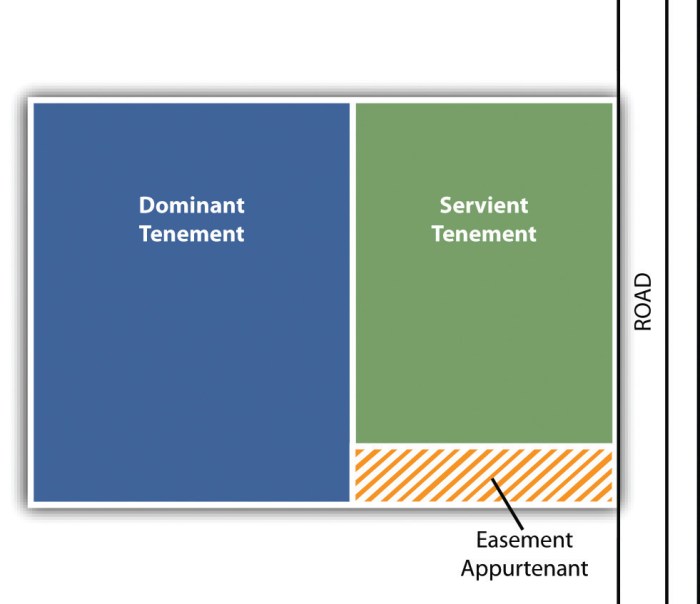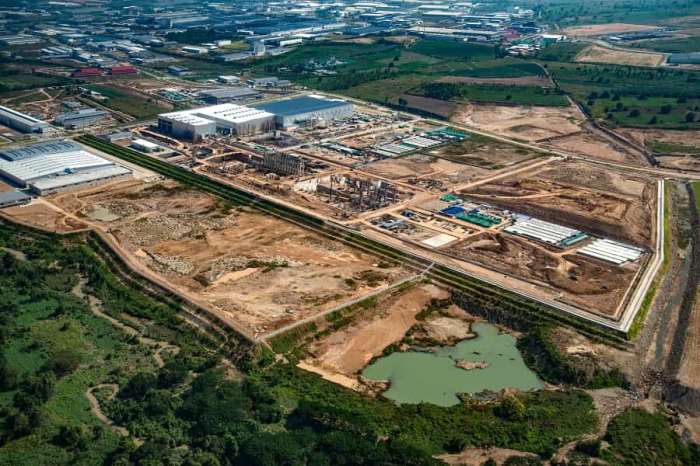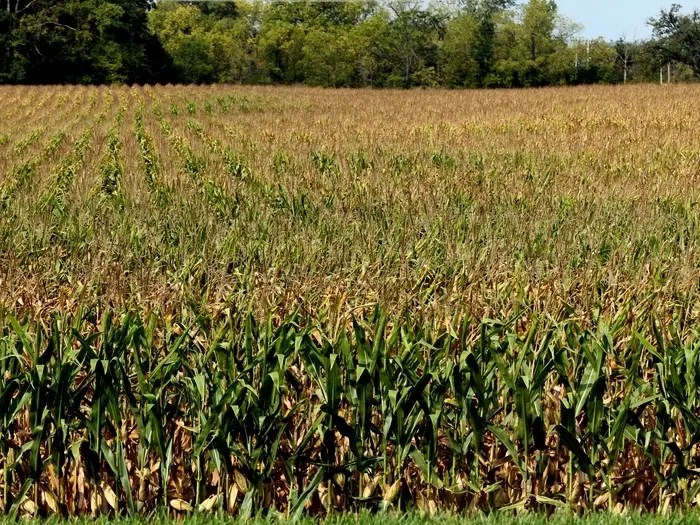What is a perpetual easement – Delving into the realm of perpetual easements, this comprehensive guide unravels the intricacies of this legal concept, empowering you with a thorough understanding of its purpose, creation, and far-reaching implications. As we embark on this journey, let’s unravel the enigmatic nature of perpetual easements, ensuring that you emerge as an informed and knowledgeable reader.
A perpetual easement grants a non-possessory right to use or access another person’s land for a specific purpose, and its enduring nature sets it apart from other types of easements. This enduring characteristic has made perpetual easements invaluable tools in various contexts, including conservation, land use planning, and infrastructure development.
As we delve deeper, we will explore the diverse applications of perpetual easements and their profound impact on land ownership, development, and the environment.
Definition of a Perpetual Easement
A perpetual easement is a legal right that gives a person or entity the right to use another person’s property for a specific purpose, in perpetuity (forever). Perpetual easements are often used to grant access to a property, such as a driveway or utility line, or to preserve a scenic view or natural habitat.
Types of Perpetual Easements
There are many different types of perpetual easements, including:
- Easements of access:These easements grant the right to cross or use another person’s property to reach a specific destination, such as a driveway or path.
- Easements of utility:These easements grant the right to install and maintain utility lines, such as power lines or water pipes, on another person’s property.
- Easements of light and air:These easements grant the right to receive light and air from another person’s property, such as a window easement.
- Easements of conservation:These easements grant the right to preserve a scenic view or natural habitat on another person’s property.
Legal Implications of Creating a Perpetual Easement
Creating a perpetual easement is a serious legal matter. Once an easement is created, it is very difficult to terminate or change. Therefore, it is important to carefully consider the terms of an easement before creating one.
Some of the legal implications of creating a perpetual easement include:
- The easement will run with the land:This means that the easement will pass to any future owners of the property.
- The easement will be binding on all successors in interest:This means that the easement will be binding on any person who acquires an interest in the property, such as a mortgagee or a lessee.
- The easement may be extinguished:An easement may be extinguished by abandonment, prescription, or merger.
Purpose and Benefits of a Perpetual Easement

Perpetual easements serve diverse purposes, including preserving natural landscapes, securing public access to recreational areas, and protecting cultural heritage sites. Establishing a perpetual easement offers numerous benefits, such as safeguarding the intended use of land in perpetuity, promoting conservation efforts, and providing tax incentives to landowners.
Case Studies
- Conservation Easement:The Nature Conservancy acquired a perpetual conservation easement on 1,000 acres of land in the Appalachian Mountains, ensuring its protection from development and preserving its biodiversity.
- Public Access Easement:A local government established a perpetual public access easement along a scenic river, allowing the community to enjoy recreational activities like fishing and kayaking.
- Historic Preservation Easement:A historical society secured a perpetual easement on a century-old Victorian mansion, protecting its architectural integrity and preserving its significance as a local landmark.
Creation and Termination of a Perpetual Easement
Perpetual easements are legal agreements that grant certain rights to use or access a piece of land, but do not transfer ownership. They can be created for a variety of purposes, such as providing access to a road, utility line, or conservation area.
To create a perpetual easement, there must be a written agreement between the landowner and the person or entity receiving the easement. The agreement must clearly define the terms of the easement, including the purpose of the easement, the area of land affected, and any restrictions on the use of the land.
Termination of a Perpetual Easement
Perpetual easements are generally intended to be permanent, but they can be terminated or modified under certain circumstances. One way to terminate an easement is through abandonment. This occurs when the person or entity holding the easement stops using it for an extended period of time, and the landowner takes back possession of the land.
Another way to terminate an easement is through merger. This occurs when the owner of the land acquires the easement, or vice versa. When this happens, the easement is extinguished and the land is no longer subject to the easement.
Limitations and Restrictions
There are some limitations and restrictions on the creation and termination of perpetual easements. For example, some jurisdictions may have laws that limit the duration of an easement or that require easements to be used for a specific purpose.
Additionally, some easements may be considered “negative easements,” which prohibit certain activities on the land. These easements are typically more difficult to terminate than affirmative easements, which grant the right to use the land for a specific purpose.
Rights and Responsibilities of Parties Involved

A perpetual easement establishes specific rights and responsibilities for both the grantor (the owner of the land subject to the easement) and the grantee (the party benefiting from the easement). These rights and responsibilities are crucial for ensuring the proper use and maintenance of the easement.
Rights of the Grantor
- Retain ownership:The grantor retains ownership of the land subject to the easement and can continue to use it for any purpose that does not interfere with the easement.
- Limit the grantee’s use:The grantor can impose reasonable restrictions on the grantee’s use of the easement to protect the land and prevent excessive interference.
- Terminate the easement:In certain circumstances, the grantor may have the right to terminate the easement if the grantee violates its terms or the easement becomes obsolete.
Responsibilities of the Grantor, What is a perpetual easement
- Maintain the easement:The grantor is typically responsible for maintaining the easement in good condition, unless otherwise specified in the easement agreement.
- Avoid interference:The grantor must refrain from any actions that could interfere with the grantee’s enjoyment of the easement.
- Disclose any encumbrances:The grantor must disclose any existing encumbrances or restrictions on the land that may affect the easement.
Rights of the Grantee
- Use the easement:The grantee has the right to use the easement for the specified purpose, as long as it does not exceed the scope of the easement.
- Maintain the easement:The grantee may have the right to maintain the easement if the grantor fails to do so, depending on the terms of the easement agreement.
- Enforce the easement:The grantee can take legal action to enforce the terms of the easement and prevent any interference by the grantor or third parties.
Responsibilities of the Grantee
- Use the easement reasonably:The grantee must use the easement in a reasonable manner that does not unreasonably burden the grantor’s land.
- Avoid damage:The grantee must avoid causing any damage to the grantor’s land or the easement itself.
- Comply with restrictions:The grantee must comply with any restrictions imposed by the grantor on the use of the easement.
Potential Conflicts
Conflicts can arise between parties involved in a perpetual easement due to disputes over the scope of the easement, interference with the easement, or failure to fulfill responsibilities. These conflicts can be resolved through negotiation, mediation, or legal action.
A perpetual easement is a legal right to use another person’s land for a specific purpose, such as a driveway or utility line. It’s like a permanent lease that lasts forever. By the way, did you know it’s time for a midterm crossword ? Anyway, back to perpetual easements, they can be created by a written agreement or by prescription, which means using the land for a certain period of time without the owner’s permission.
Dispute Resolution
- Negotiation:The parties can attempt to resolve disputes through direct negotiation and compromise.
- Mediation:A neutral third party can facilitate a mediation process to help the parties reach an agreement.
- Legal action:If other methods fail, the parties can file a lawsuit to enforce the terms of the easement or seek compensation for damages.
Impact on Land Value and Development: What Is A Perpetual Easement
Perpetual easements can significantly impact the value of the land subject to the easement. The presence of an easement can restrict the use and development of the land, potentially reducing its value. However, in some cases, an easement can also enhance the value of the land, particularly if it provides access to desirable amenities or protects the land from undesirable uses.
Perpetual easements can also affect development rights and land use planning. They can restrict the types of activities that can occur on the land, such as building, mining, or logging. This can have a significant impact on the development potential of the land and may require developers to adjust their plans accordingly.
Examples of Impact on Specific Areas
One example of how perpetual easements have influenced the development of a specific area is the case of the Central Park Conservancy in New York City. The Conservancy holds a perpetual easement over Central Park, which restricts the use of the land to parkland and recreational purposes.
This easement has helped to preserve the park as a green space in the heart of Manhattan, despite the intense development pressure in the surrounding area.
Another example is the case of the Grand Staircase-Escalante National Monument in Utah. The monument was established in 1996 and includes a perpetual easement over private land within the monument’s boundaries. The easement restricts the use of the land to grazing and other traditional uses, which has helped to protect the natural and cultural resources of the area.
Case Studies and Real-World Applications

Perpetual easements have a wide range of applications in various contexts, including land conservation, public access, and historic preservation.
In the United States, conservation easements are widely used to protect natural resources and open spaces. For example, the Land Trust Alliance holds over 2 million acres of land under conservation easements, protecting forests, wetlands, and other ecologically valuable areas.
Public Access
Perpetual easements can also be used to create public access to land. For example, the Appalachian Trail is a 2,190-mile hiking trail that crosses 14 states. Much of the land along the trail is protected by perpetual easements, allowing hikers to enjoy the scenery and natural beauty of the area.
Historic Preservation
Perpetual easements can also be used to protect historic buildings and sites. For example, the National Trust for Historic Preservation holds easements on over 300 historic properties across the United States. These easements help to ensure that these properties are preserved and maintained for future generations.
Perpetual easements are a valuable tool for protecting land and resources for future generations. They can be used to achieve a variety of purposes, including conservation, public access, and historic preservation.
Top FAQs
What is the primary purpose of a perpetual easement?
Perpetual easements are primarily established to grant a non-possessory right to use or access another person’s land for a specific purpose, such as conservation, recreation, or infrastructure development.
How is a perpetual easement created?
The creation of a perpetual easement requires a written agreement between the grantor (owner of the land) and the grantee (recipient of the easement). This agreement must be recorded in the county land records to be legally binding.
Can a perpetual easement be terminated?
Terminating a perpetual easement is generally difficult and requires specific legal grounds, such as abandonment, merger, or prescription. It is important to consult with an attorney to determine the feasibility of terminating an easement.
What are the benefits of establishing a perpetual easement?
Perpetual easements offer numerous benefits, including preserving natural resources, protecting historic landmarks, facilitating public access to land, and enhancing property values.